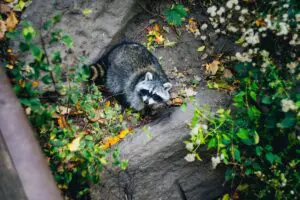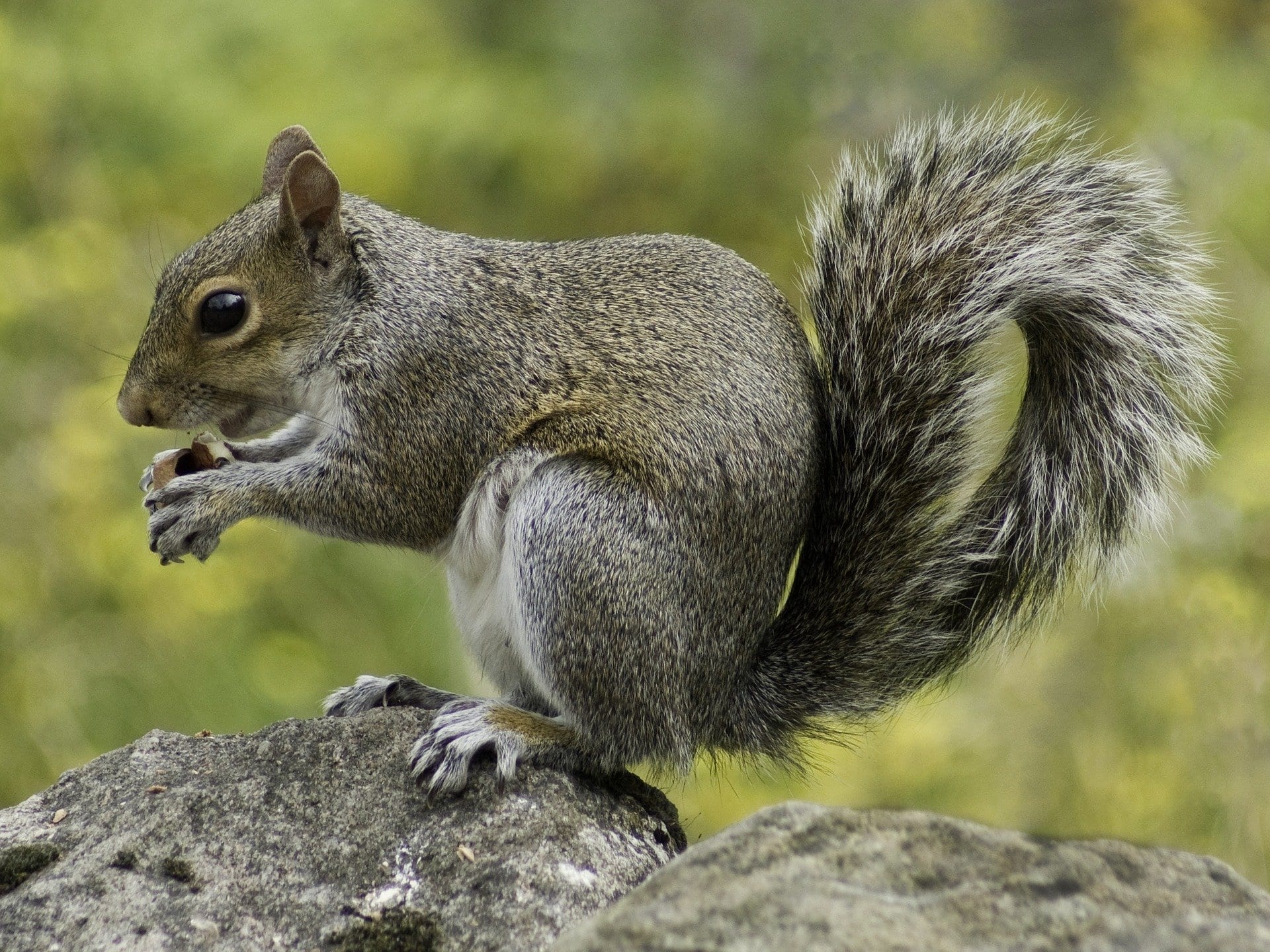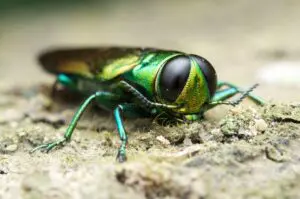

The cooler weather is here, which means many outdoor pests are looking for a place to make their winter homes, including squirrels. Like other rodents, squirrels are among the worst cool-weather pests to have in homes and businesses. Not to worry, though, because this identification and prevention guide can help you keep your home or business squirrel-free this winter.
Identification
Squirrels are part of the scientific order Rodentia, along with their more infamous cousin - rats. The following are some of the most common species of squirrels encountered by home and business owners.
Eastern Gray squirrels are the most common species of squirrel. Their bodies are between 9.1 and 12 inches in length, and their tails are around 8 inches long. As their name suggests, they are gray in color. Their bellies are white, and their flanks range in color from gray to reddish. Some eastern gray squirrels appear reddish in color, while others are albino or melanistic, meaning they are all black. Of course, alternate colorations are not as common as all grey colorings.
Red Squirrels are roughly 8.4 inches long with tails that are between 6 and 8 inches long. Their tails are not quite as bushy or long as those of other tree squirrel species. Their bodies range in color from reddish to reddish-gray, and they have cream-colored bellies. The fur around their eyes is white, and they sometimes develop a black stripe on either side of their bodies during the summer.
Flying Squirrels are nocturnal, so they are not witnessed as often as other species of squirrels. There are two types of flying squirrels- northern and southern. For the most part, the two are quite similar. Both species have very large black eyes and a flat tail. They also have a membrane on either side of their bodies that extends from the rear legs to the front legs, which allow them to glide through the air. Both species have gray-brown fur and cream-colored bellies. There are a couple of characteristics that separate the two species as well. First, northern flying squirrels are slightly larger, ranging from 10 to 12 inches in length. Southern flying squirrels are typically between 8.3 and 10 inches in length. Second, the hair colorings of the belly area between the front legs are slightly different. For northern flying squirrels, that particular area has fur that is white at the tips and lead colored closer to the skin, giving it a slightly darker and grayer appearance. For southern flying squirrels, that area has fur that is white from tip to base.
Damage
Squirrels can cause extensive damage, both indoors and outdoors. Outdoors, they are mostly a nuisance, causing damage to gardens and occasionally chewing on outdoor furniture. However, if the garden they damage is close to a home or business, there is a good chance they will eventually move indoors, which can be dangerous and costly.
Like most rodents, squirrels can enter buildings through the tiniest of openings. If they find an opening that is not quite big enough, or if they can’t find an opening at all, they will chew through siding, shingles, walls, and any other building materials in their way in order to get inside. Once inside, they will chew through almost anything they can get their paws on, especially wood and insulation. Such materials are perfect for building nests. In addition, chewing through materials strengthens their teeth, which is why they are able to cause such extensive damage.
Most of the wood and insulation squirrels chew through can luckily be fixed or replaced. The bigger issues come when they chew through things like wires and utility lines. Wiring and lines that have been chewed through are serious fire hazards. Squirrels have also been known to chew through PVC piping, which can cause flooding and water damage.
When they enter a building, squirrels are not just looking for shelter. They are also looking for food, and their search often leads them to kitchens and pantries. They will contaminate any food they get into with their germs, but they may also spread certain diseases. The most common diseases spread by squirrels are Hemorrhagic jaundice, leptospirosis, Lyme disease, rabies, salmonellosis, and tularemia. Besides spreading diseases directly, they can also spread diseases indirectly through any infected fleas or ticks they may be carrying. For more information about squirrel-borne diseases, visit these CDC pages with information regarding directly and indirectly transmitted diseases.
Tips
Squirrel populations can seem almost impossible to control, but there are some methods to keep them at bay. We put together a list of the best ways to keep squirrels out of your home or business.
Don’t invite them
Squirrels will keep showing up wherever they have found food in the past. Feeding them, intentionally or not, will cause the squirrel population in your yard to rise. Bird feeders are common attractions for squirrels, so try to squirrel-proof any existing feeders, or buy feeders that are already squirrel-proof. They are also attracted to fallen fruits and nuts. As such, it is important to rake regularly so as to remove fallen food, especially around trees and feeders. In addition, your outdoor garbage cans should have tight-fitting lids, so squirrels are not attracted to the food scraps within.
Scare them away
Squirrels are scared of larger animals, so having a dog or outdoor cat will keep most squirrels out of your yard. If you do not have any outdoor pets, there are other methods that will scare away squirrels. One method is to install motion-activated sprinklers that will spray any squirrels that enter your yard. Another method, although somewhat unpleasant, is buying containers of predator urine, such as that of a tiger or wolf, to spray in your garden or on trees. If squirrels smell evidence of a predator, they will not venture near. Such sprays need to be reapplied after a rain. Placing plastic owls around your yard in elevated areas will also scare away squirrels.
Make your yard undesirable
Squirrels will not want to move into your yard if the landscape is not squirrel-friendly. There are certain plants and flowers that squirrels will not eat or do not like the smell of, and they will steer clear of gardens with such plants. Flowers they will not eat include allium, daffodils, hyacinth, and snowdrops. They do not like the smell of peppermint, so they will not go near a garden with mint planted around the edges. There are taste repellents available, like capsaicin or chemical repellents. Such repellants need to be reapplied after it rains, and should not be used on plants that you plan to eat. Fences or netting around gardens are a good alternative to spray repellents. They should be at least 30 inches above ground and 6 inches below ground. Squirrel baffles are also great deterrents and can be used on trees or bird feeder poles.
Eliminate pathways
Squirrels cannot become a problem in areas that they cannot reach. As such it is important to eliminate any potential pathways squirrels can use to enter a home or business. One common pathway that squirrels use to reach attics is by climbing across utility wires. This can be prevented by placing sections of lightweight plastic piping, approximately 2 to 3 inches in diameter, on non-electrical wiring. Make a slit in the pipe lengthwise and then open the pipe along the slit wide enough to be able to fit it around the wiring. When a squirrel tries to walk across it, the pipe will spin and the squirrel will fall. Tree branches and shrubs should also be trimmed back, away from the outside of the building. Most squirrels have a maximum vertical jump height of 5-6 feet and parallel horizontal length of 7-8 feet. Keep these metrics in mind when pruning tree branches away from the home. This will also keep rats from using the same pathways as they have a significantly reduced ability to vault the same distances as their fuzzy tailed cousins. In addition to eliminating pathways, any entry points should also be eliminated. Squirrels can fit through tiny gaps, so any holes or cracks in the outside of a building should be fixed. Areas that commonly have holes, cracks, or gaps, include siding, eaves, shingles, foundations, around doors and windows, and around where utility lines enter a building. If any spots are chewed through again after they have been repaired, they should be patched up with metal flashing, as it cannot be chewed through. Chimneys are also a common entry point, so metal mesh should be installed to cover the opening.
Set traps
If you already have squirrels on your property, setting traps is a good way to minimize the population. Depending on your location though, trapping may be illegal, so you should always check with your state’s Department of Fish and Wildlife before setting any traps.
Unfortunately, prevention methods do not always work when squirrel populations are already at the level of an infestation. If you think you may have an infestation, or if you are having any trouble with squirrels on your property, call our experts today.
For more information about Wildlife Control have a look at our resource page.






